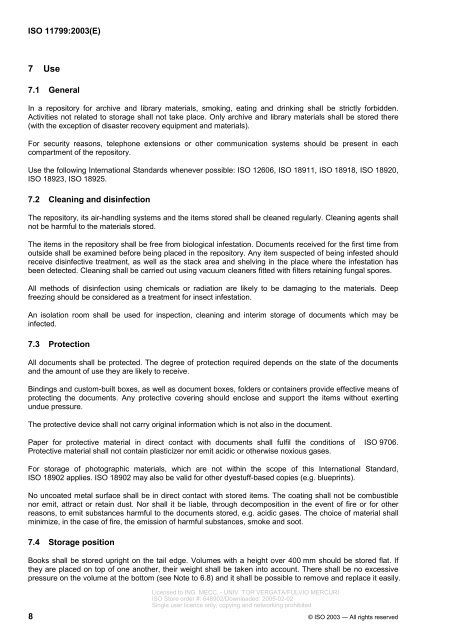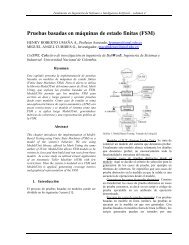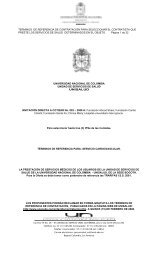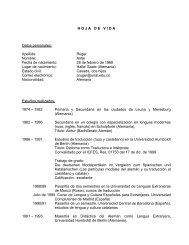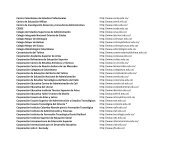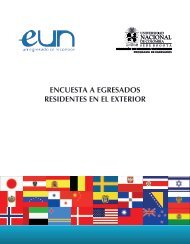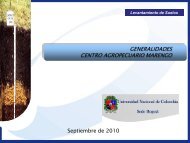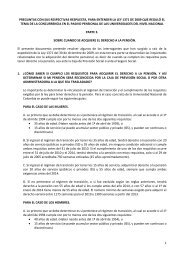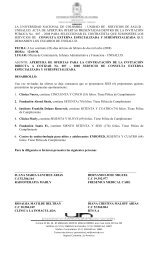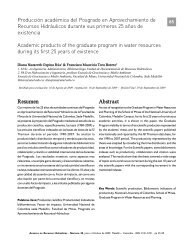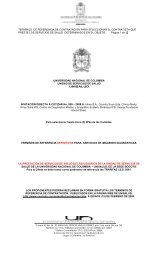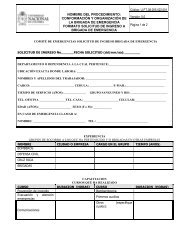ISO 11799
ISO 11799
ISO 11799
You also want an ePaper? Increase the reach of your titles
YUMPU automatically turns print PDFs into web optimized ePapers that Google loves.
<strong>ISO</strong> <strong>11799</strong>:2003(E)<br />
7 Use<br />
7.1 General<br />
In a repository for archive and library materials, smoking, eating and drinking shall be strictly forbidden.<br />
Activities not related to storage shall not take place. Only archive and library materials shall be stored there<br />
(with the exception of disaster recovery equipment and materials).<br />
For security reasons, telephone extensions or other communication systems should be present in each<br />
compartment of the repository.<br />
Use the following International Standards whenever possible: <strong>ISO</strong> 12606, <strong>ISO</strong> 18911, <strong>ISO</strong> 18918, <strong>ISO</strong> 18920,<br />
<strong>ISO</strong> 18923, <strong>ISO</strong> 18925.<br />
7.2 Cleaning and disinfection<br />
The repository, its air-handling systems and the items stored shall be cleaned regularly. Cleaning agents shall<br />
not be harmful to the materials stored.<br />
The items in the repository shall be free from biological infestation. Documents received for the first time from<br />
outside shall be examined before being placed in the repository. Any item suspected of being infested should<br />
receive disinfective treatment, as well as the stack area and shelving in the place where the infestation has<br />
been detected. Cleaning shall be carried out using vacuum cleaners fitted with filters retaining fungal spores.<br />
All methods of disinfection using chemicals or radiation are likely to be damaging to the materials. Deep<br />
freezing should be considered as a treatment for insect infestation.<br />
An isolation room shall be used for inspection, cleaning and interim storage of documents which may be<br />
infected.<br />
7.3 Protection<br />
All documents shall be protected. The degree of protection required depends on the state of the documents<br />
and the amount of use they are likely to receive.<br />
Bindings and custom-built boxes, as well as document boxes, folders or containers provide effective means of<br />
protecting the documents. Any protective covering should enclose and support the items without exerting<br />
undue pressure.<br />
The protective device shall not carry original information which is not also in the document.<br />
Paper for protective material in direct contact with documents shall fulfil the conditions of <strong>ISO</strong> 9706.<br />
Protective material shall not contain plasticizer nor emit acidic or otherwise noxious gases.<br />
For storage of photographic materials, which are not within the scope of this International Standard,<br />
<strong>ISO</strong> 18902 applies. <strong>ISO</strong> 18902 may also be valid for other dyestuff-based copies (e.g. blueprints).<br />
No uncoated metal surface shall be in direct contact with stored items. The coating shall not be combustible<br />
nor emit, attract or retain dust. Nor shall it be liable, through decomposition in the event of fire or for other<br />
reasons, to emit substances harmful to the documents stored, e.g. acidic gases. The choice of material shall<br />
minimize, in the case of fire, the emission of harmful substances, smoke and soot.<br />
7.4 Storage position<br />
Books shall be stored upright on the tail edge. Volumes with a height over 400 mm should be stored flat. If<br />
they are placed on top of one another, their weight shall be taken into account. There shall be no excessive<br />
pressure on the volume at the bottom (see Note to 6.8) and it shall be possible to remove and replace it easily.<br />
Licensed to ING. MECC. - UNIV. TOR VERGATA/FULVIO MERCURI<br />
<strong>ISO</strong> Store order #: 648902/Downloaded: 2005-02-02<br />
Single user licence only, copying and networking prohibited<br />
8 © <strong>ISO</strong> 2003 — All rights reserved


